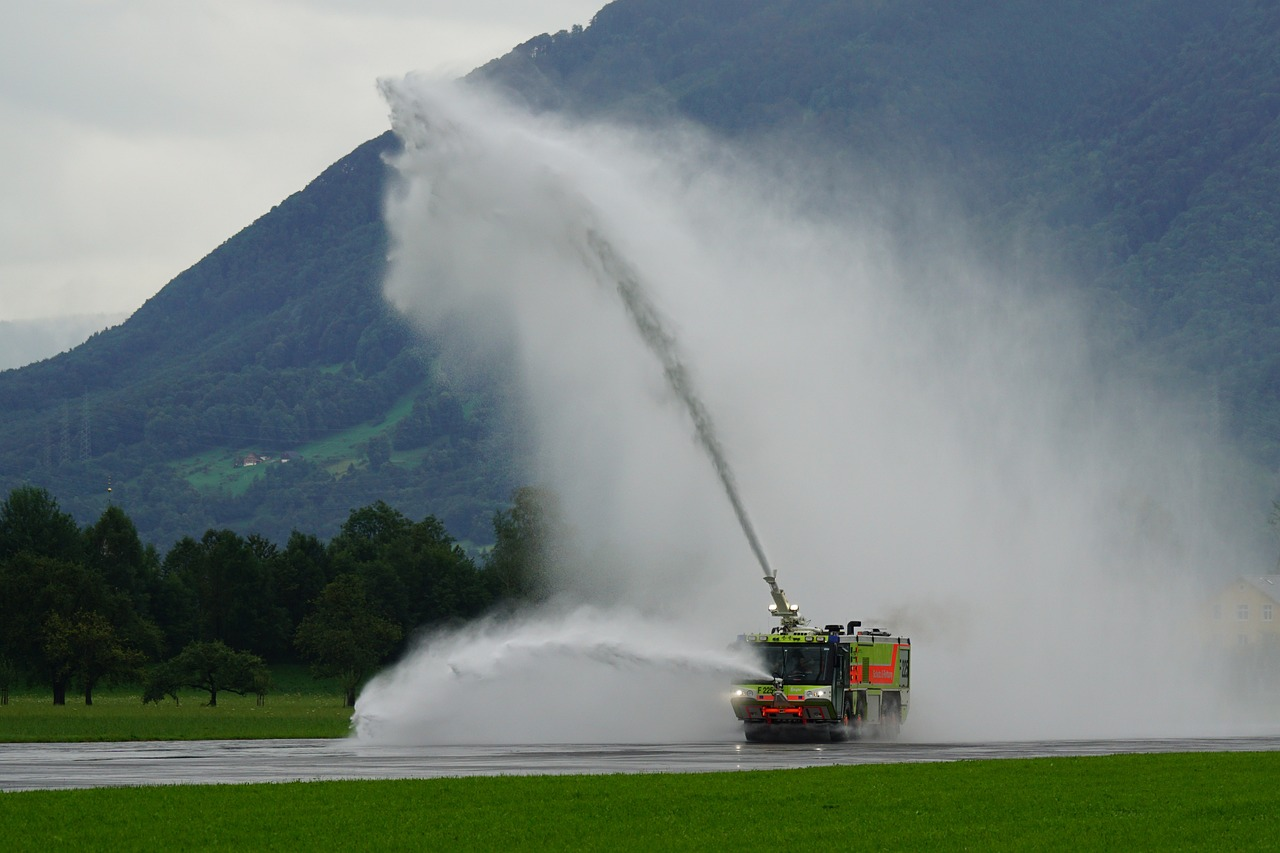5 Vital Insights About Aqueous Film-Forming Foam (AFFF)

Image Source: https://cdn.pixabay.com/photo/2016/08/06/14/56/fire-1574513_1280.jpg
AFFF, or Aqueous Film-Forming Foam, is a specialized foam designed to extinguish fires fueled by flammable liquids such as gasoline. Widely deployed in diverse settings like military bases and firefighting training centers, its efficacy in quelling such fires is notable.
However, the composition of AFFF raises apprehensions, as it contains chemicals that may pose health risks, sparking concerns about potential links to cancer.
This article aims to shed light on five crucial aspects of AFFF, offering insights into its effectiveness as a fire suppressant, the specific chemicals within its formulation, and the associated health concerns.
#1 AFFF Stands Out as an Exceptionally Effective Firefighting Substance
Aqueous Film-Forming Foam (AFFF) is a highly effective firefighting substance utilized in scenarios with a significant flammable liquid hazard. Its applications span diverse settings, including chemical plants and highway emergency responses.
AFF is also used in merchant operations like oil tankers, offshore platforms, oil refineries, terminals, bulk fuel storage farms, aviation operations, military facilities, and more. It is crucial in fire suppression systems on ships and shore facilities, firefighting vehicles, and training facilities.
When procured, AFFF is obtained as a concentrate, commonly labeled as “3%” or “6%” (Type 3 or Type 6, respectively), denoting its mixture ratio with water. This versatile substance serves as a frontline defense against flammable liquid fires, ensuring its widespread use across various industries and emergency response scenarios.
#2 PFAS Challenges in AFFF Formulations
Some Aqueous Film Forming Foam (AFFF) formulations include per- and polyfluoroalkyl substances (PFAS), widely used in various applications. While AFFF effectively combats fires, unintended consequences arise due to PFAS.
Exposure to PFAS is widespread, detected in nearly every American’s blood, and linked by the EWG to health hazards, including cancer and reproductive issues.
Despite the discontinuation of certain PFAS chemicals, their stability leads to environmental persistence, accumulating over time. A significant concern for the fire service involves PFAS leaching into the soil, potentially contaminating groundwater sources.
#3 The Use of AFFF Has Raised Concerns About Its Impact on the Environment
AFFF, or Aqueous Film Forming Foam, raises environmental concerns, particularly regarding its discharge and subsequent impact. The key issues encompass toxicity, biodegradability, persistence, treatability in wastewater treatment plants, and soil nutrient loading. These factors become problematic when AFFF enters natural or domestic water systems.
In instances where AFFF sees prolonged use in specific locations, such as fire training facilities, PFAS migration occurs. PFAS, present in AFFF, can move from the foam to the soil and eventually reach groundwater.
The quantity of PFAS entering groundwater varies based on AFFF type and quantity, usage locations, soil characteristics, and other factors. This migration poses a potential threat to nearby private wells or public well fields.
#4 AFFF Exposure Raises Red Flags on Firefighters’ Health
Firefighters, both civilian and military, who utilize the fire suppressant Aqueous Film-Forming Foam (AFFF) face a significantly heightened risk of developing severe and potentially life-threatening diseases, particularly cancer.
Recent studies reveal a disturbing 9% increase in the likelihood of cancer diagnosis among these firefighters, coupled with a staggering 14% greater risk of succumbing to cancer compared to the general population.
The peril arises from perfluoroalkyl and polyfluoroalkyl substances, collectively known as PFAS, in AFFF. Exposure to this fire suppressant poses substantial dangers to the well-being of those on the front lines of firefighting.
The International Pollutants Elimination Network (IPEN), a global consortium of public interest organizations committed to enhancing chemical policies and raising public awareness about hazardous substances, sheds light on the gravity of the situation.
According to an October 2019 white paper by an IPEN expert panel, firefighters utilizing AFFF exhibit alarmingly elevated blood levels of PFHxS (perfluorohexane sulfonate) and PFOS (perfluorooctane sulfonate).
The experts emphasize that firefighters are at an increased risk of exposure to these substances through various channels:
- Utilizing firefighting foam (AFFF) during fire suppression operations and training.
- Coming into contact with Personal Protective Equipment (PPE) contaminated with PFAS.
- Handling equipment contaminated with AFFF.
- Managing PFAS foam wastes.
- Occupying contaminated fire stations.
Even minimal concentrations of these highly toxic chemicals in the bloodstream can pave the way for the development of diseases.
According to TorHoerman Law, certain PFAS tend to accumulate and persist in the human body for extended periods, with their levels taking approximately four years to decrease by half. This extended presence poses a significant and sustained health threat to both civilian and military firefighters reliant on AFFF in the line of duty.
That’s the reason behind the emergence of the firefighter foam lawsuit. Numerous firefighters nationwide who’ve developed cancer due to PFAS exposure are filing lawsuits to obtain compensation from firefighting foam manufacturers accountable for their illnesses.
Seeking both justice and financial reparation, many firefighters are opting to initiate AFFF cancer lawsuits concerning their occupational exposure and cancer diagnosis.
#5 There Are Some Great Alternatives to AFFF
While AFFF remains a highly effective firefighting solution, its demonstrated human health risks and environmental implications have raised concerns, especially in light of new EPA requirements and regulatory measures.
Fortunately, viable alternatives exist, showcasing advancements in firefighting technology. Here are some noteworthy alternatives currently available:
C6 Foam Concentrates: Functioning similarly to AFFF, C6 foam concentrates employ a more advanced formulation that minimizes environmental contamination. While not flawless, C6 offers comparable effectiveness to C8 AFFF while reducing toxin release.
Fluorine-Free Fire Fighting Foams (F3): F3 presents a fire-suppressing foam option that completely avoids releasing PFAS chemicals into the environment. Suitable for manual firefighting applications and fixed systems, F3 has undergone engineering evaluation for readiness.
Dry Chemical Alternatives: Dry chemical fire protection solutions serve as effective substitutes for AFFF in various firefighting scenarios. Products like Ansul’s Purple-K, Foray, and PLUS-Fifty address Class A, B, and C fires without posing the same PFAS-related health and environmental concerns.
In The End
To wrap it up, AFFF is a potent firefighting foam widely employed, but its composition, particularly the presence of PFAS, raises environmental and health red flags. Concerns include its environmental impact, especially regarding discharge and PFAS migration.
Firefighters using AFFF are at an elevated risk of health issues, prompting legal actions. Despite AFFF’s efficacy, promising alternatives like C6 Foam Concentrates, Fluorine-Free Fire Fighting Foams (F3), and Dry Chemical Alternatives offer effective firefighting with reduced environmental and health risks.





